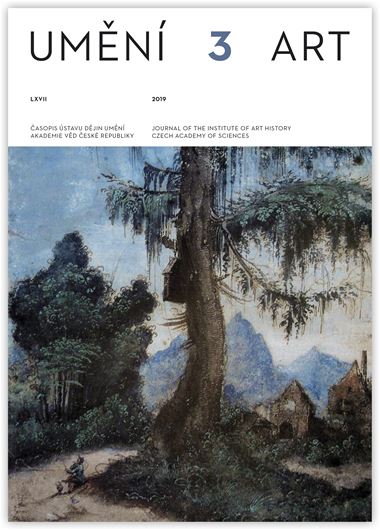Jan Klípa
The Enthroned Madonna from Dijon. A Recently Discovered Painting from the Workshop of the Master of the Vyšší Brod Altarpiece
At the end of 2018, a small panel painting of an Enthroned Madonna from the private property of a family living near Dijon appeared in an antique shop in Paris. Based on style and comparative analysis, the painting can be incorporated into the oeuvre of the Prague workshop of the Master of the Vyšší Brod Altarpiece, and its execution can be dated to approximately the mid-1350s. Formally closest to this painting are the Madonna of Rome and the Karlsruhe Diptych, and — like in the case of these two panels — the Dijon Madonna had probably also formed a diptych. Yet numerous convincing formal parallels also point to other works by the aforesaid Master and his wider workshop circle.The extant panel is slightly trimmed and its background is repainted with a coarse, monochrome coat of paint with pasted paper stars. However, X-ray and infrared images have revealed under the repainted layer a well-preserved painting of rich aedicule architecture of the Virgin’s throne, whose closest parallel is perhaps the architecture of the prison of Saint Mark in one of the scenes of the so-called Pala Feriale. This panel was commissioned in the workshop of Paolo Veneziano in 1345 as a cover for the famous Pala d’Oro altarpiece. An Italian inspiration is indicated by the motif of the Christ Child holding his foot with his hand and turning it outward so as to show the sole of the foot — a motif hitherto unregistered in Bohemian panel painting of the 14th century. This feature appeared in Tuscan painting as early as the first half of the 14th century, but reached its greatest popularity only in the work of Barnaba da Modena. Another unusual motif is the blue, rather than gold, halo of the Virgin Mary. Coloured haloes are frequently seen in book illumination of the early Middle Ages. In the Bohemian milieu of the 14th century, they have been also known so far only in miniature painting (Breviary of the Provost Vítek, Klosterneuburg Missal). The recently discovered panel complements the production of the Master of the Vyšší Brod Altarpiece and his circle with the motif of an Enthroned Madonna executed in a size that corresponded to works intended for private devotion (which thus makes it a pendant to the lavish and much more monumental Enthroned Madonna of Kłodzko). To date, the incidence of this type has been attested to only by the later paintings of the Enthroned Madonna of Görlitz and the now-missing panel from Koenigsberg.
Jan Klípa: klipa@udu.cas.cz
Full-text in the Digital Library of the Czech Academy of Sciences:
https://kramerius.lib.cas.cz/uuid/uuid:71c93a3d-a03f-4a48-b217-7e798e89a763
< back

